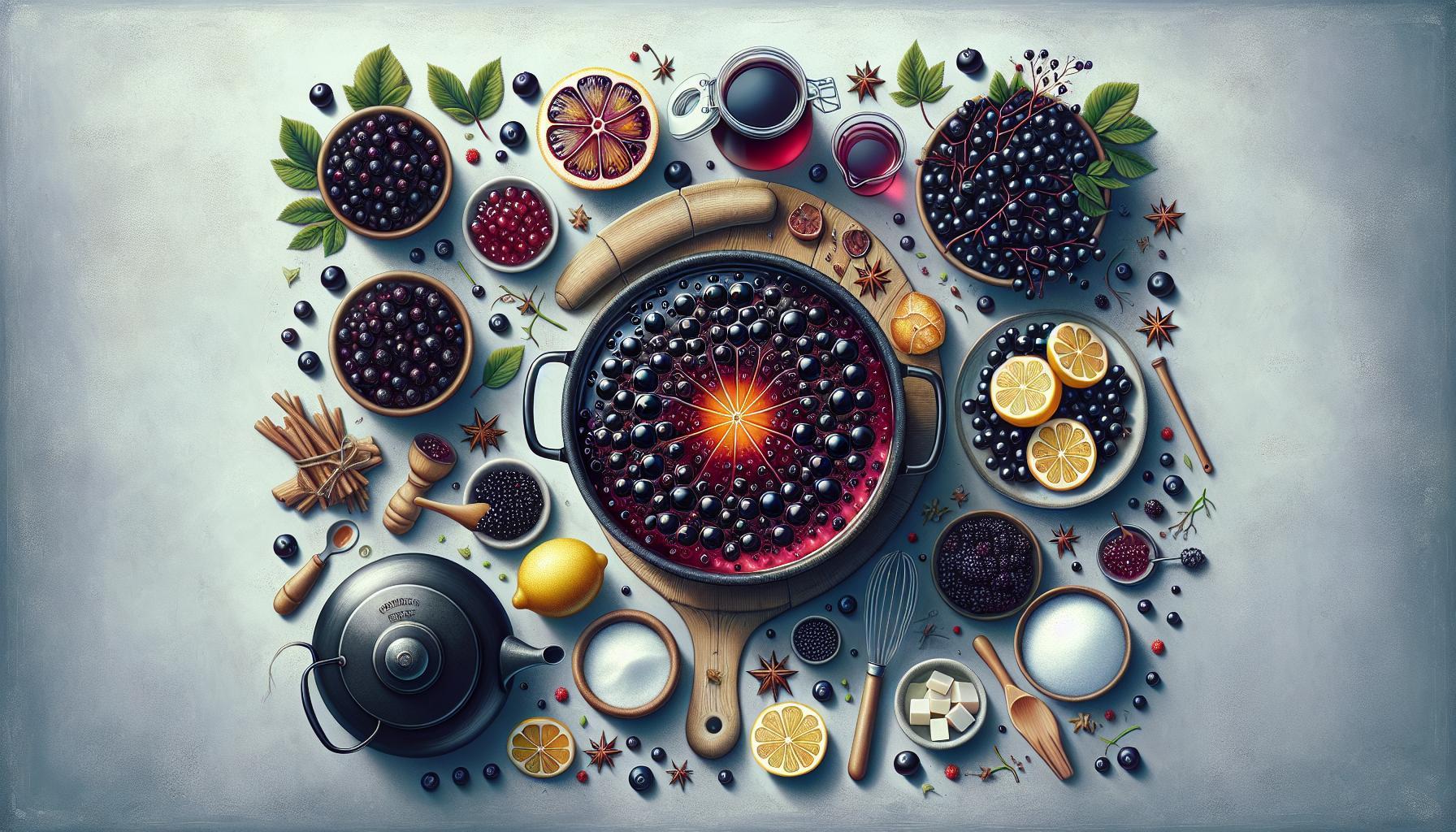Awash in rich, deep purple and boasting a unique tangy-sweet flavour, elderberry jelly is a hidden gem of the UK’s culinary scene. Tracing its origins through centuries of British food culture, this delectable jelly has a special place in the heart of those who’ve a taste for the extraordinary. Alive in autumn, elder trees dot the UK landscape, their bunches heavy with the tiny, ripe berries from which this delightful dish originates.
Ingredients List
- 1 kg elderberries
- 1 kg cane sugar
- 1 lemon
- 100 ml apple cider
- 1 sachet pectin
- Water as needed
Instructions
- Start by thoroughly washing the elderberries and removing them from their stems. Then, in a large pot, stew the elderberries with a splash of water until they become soft and juicy. This should take about 10 minutes.
- Whilst stewing the elderberries, squeeze the juice out of your lemon and add it to the pot. The citrus not only adds a dash of zest but also aids in the setting of the jelly.
- Next, strain the mix to discard the seeds and remain with the tantalising elderberry juice. Return this juice to the heat and add the sugar to sweeten.
- Boil the mixture again until it reaches a “jelly” consistency. This should take about 20 minutes. Test whether it has reached this point by placing a spoonful on a cold plate. If it wrinkles when nudged, it is ready.
- Once the suitable consistency is achieved, add the pectin and boil for another 2 minutes. Then, transfer the jelly to sterilised jars, seal, and let it cool!
Cooking Time & Servings
This elderberry jelly recipe should take approximately 50 minutes to prepare and cook. It yields enough for about 4 jars.
Nutritional Information
Aside from its unique taste, elderberry jelly also carries several potential health benefits. It’s brimming with antioxidants and vitamins that can boost your immune system, plus the natural sugars provide a burst of energy. Here are the nutritional facts per serving (2 tablespoons):
- Total Calories: 50
- Fat: 0 gram
- Carbohydrates: 13 grams
- Protein: 0 grams
Tips and Tricks
If you want to add a unique twist, try mixing in some spices like cinnamon or cloves during the cooking process. For those with dietary constraints, consider using a sugar substitute. Do remember, the flavour of the jelly can change slightly depending on the ripeness of the elderberries, so taste and adjust the sweetness as per your liking!
Ending on a sweet note, this recipe not only tantalises your taste buds…
..but also complexion of the UK’s rich culinary history. I encourage you to delight in the process of making this elderberry jelly recipe, from the picking to the preserving. I’d absolutely love to know how it turned out for you! Feel free to share your elderberry journey with us in the comments below or proudly post a picture of your creation on social media. Enjoy this marvellous sweet treat with a slice of your favorite bread or scones.
Frequently Asked Questions
1. Can I use dried elderberries for this recipe?
Yes, you can. However, dried elderberries require more water to rehydrate.
2. Can I substitute the sugar with honey?
Honey can alter the taste of the jelly and doesn’t set as effectively, but you’re welcome to try!
3. Is this jelly recipe gluten-free?
Yes, it is naturally gluten-free.
4. How long can I store elderberry jelly?
Well-sealed in a cool place, it can last up to a year.
5. Are elderberries safe to eat raw?
Not recommended, elderberries are best eaten cooked.


